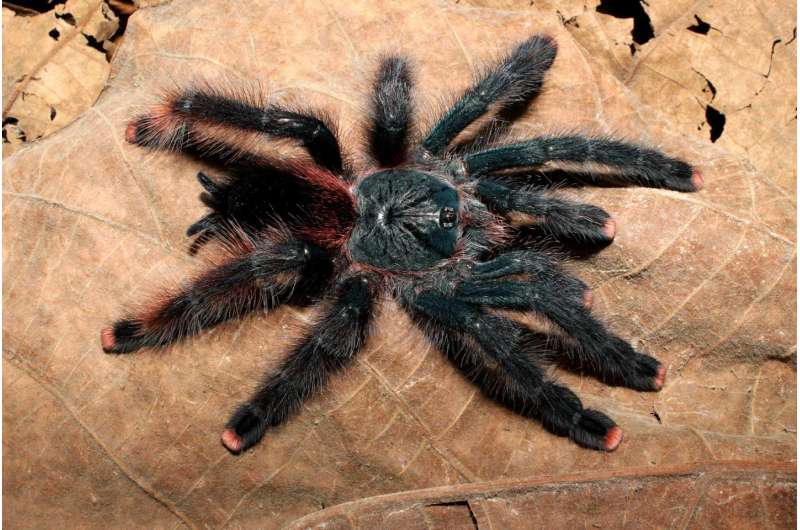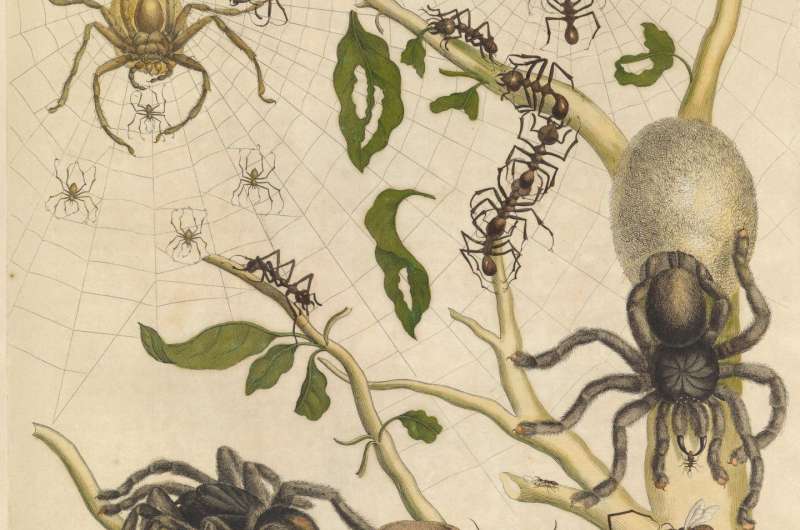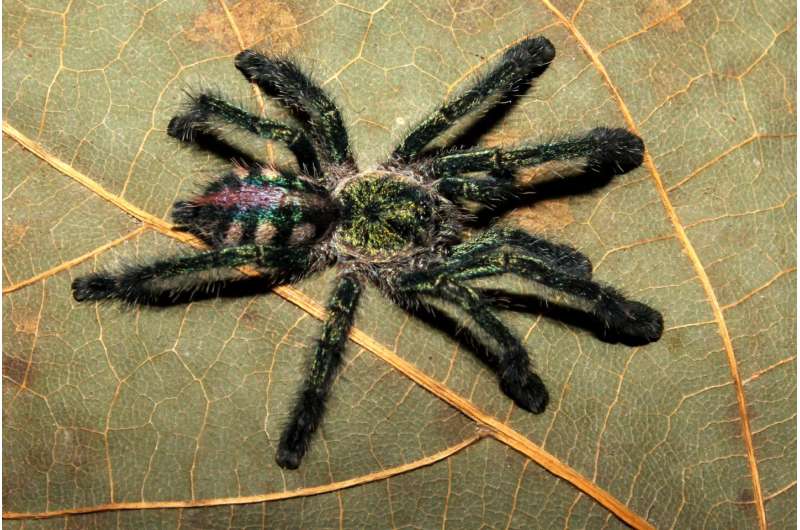Bird spiders detectives: The solution to a 200-year-old hairy mystery

Three species and three genera of birdeater spiders are described as new to science in a paper recently published in the open access journal ZooKeys. In their study, the Brazilian spider experts, Drs. Caroline Fukushima and Rogério Bertani, Laboratory of Ecology and Evolution, Instituto Butantan, report the diversity of the oldest tarantula genus (Avicularia), whose name derives from a famous 18th-century illustration depicting a bird caught by a spider.
Even though these harmless tarantulas have long been a favourite exotic pet around the world, their identity has remained problematic ever since the first species was described back in 1758 by the "father of modern taxonomy", Carl Linnaeus.
"He described the species based on a hodgepodge of spiders," explain the authors. "Over the next centuries, other species with completely different characteristics were called Avicularia creating a huge mess." As a result, basic questions, such as the characteristic traits of the genus, the number of its species and their localities, have been left unanswered.
To address the confusion, the team studied both newly collected specimens and also specimens from around the world which had previously been deposited in museum collections. Thus, they concluded that, instead of the 49 species previously assigned to the problematic genus, there are in fact only 12, including three new to science.
One of the new species, Avicularia merianae, is named after Maria Sybilla Merian (1647-1717), a pioneering scientist and a remarkable artist who made the famous illustration of a spider eating a bird. In fact, it was her work that gave birth to the popular name used for a whole group of spiders, also known as birdeaters or bird spiders.

Meanwhile, the name of the new genus Ybyrapora, which occurs in the Brazilian Atlantic rainforest, translates to "those that live in trees" from the indigenous local language Tupi. It refers to the arboreal habitat of these species. The other two tarantula genera live exclusively on the Caribbean Islands.
"People think all biologists are like Indiana Jones, with their daily lives full of adventures in the wild. But most of the time, they are much more like Sherlock Holmes - sitting on a chair, collecting and analysing clues (specimens and scientific papers) and then using logical reasoning to solve Nature's mysteries," comments Dr. Caroline Fukushima.
"We, taxonomists, are 'wildlife detectives' who play an essential role not only in biology and conservation. Our work can also become the grounds for new technologies, medicines and ideas that could solve a variety of problems," she adds.
"We are delighted to have finally closed one of the oldest unsolved cases," the authors conclude.

More information: Caroline Sayuri Fukushima et al, Taxonomic revision and cladistic analysis of Avicularia Lamarck, 1818 (Araneae, Theraphosidae, Aviculariinae) with description of three new aviculariine genera, ZooKeys (2017). DOI: 10.3897/zookeys.659.10717
Journal information: ZooKeys
Provided by Pensoft Publishers




















